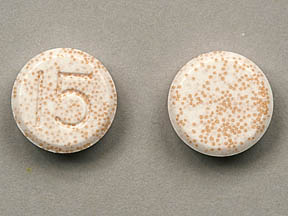Prevacid SoluTab Disease Interactions
There are 4 disease interactions with Prevacid SoluTab (lansoprazole).
PPIs (applies to Prevacid SoluTab) C. diff
Major Potential Hazard, Moderate plausibility. Applicable conditions: Pseudomembranous Colitis, Diarrhea
Published observational studies suggest that proton pump inhibitor (PPI) use may be associated with an increased risk of Clostridium difficile-associated diarrhea (CDAD), especially in hospitalized patients. This diagnosis should be considered for diarrhea that does not improve. It is recommended that patients should use the lowest dose and shortest duration of PPI therapy appropriate to the condition being treated. Close monitoring is recommended in patients with diarrhea and in those taking antibacterial agents as CDAD has been reported with the use of nearly all these agents. Treatment with antibacterial agents alters the normal flora of the colon, leading to overgrowth of C. difficile. C. difficile produces toxins A and B, which contribute to the development of CDAD. Appropriate fluid and electrolyte management, protein supplementation, antibiotic treatment of C. difficile, and surgical evaluation should be instituted as clinically indicated.
References (8)
- (2022) "Product Information. PriLOSEC (omeprazole)." Merck & Co., Inc
- (2001) "Product Information. Prevacid (lansoprazole)." TAP Pharmaceuticals Inc
- (2001) "Product Information. Aciphex (rabeprazole)." Janssen Pharmaceuticals
- (2001) "Product Information. Protonix (pantoprazole)." Wyeth-Ayerst Laboratories
- "Product Information. Protonix IV (pantoprazole)." Wyeth-Ayerst Laboratories
- (2009) "Product Information. Kapidex (dexlansoprazole)." Takeda Pharmaceuticals America
- (2014) "Product Information. NexIUM I.V. (esomeprazole)." Astra-Zeneca Pharmaceuticals
- (2014) "Product Information. Esomeprazole Strontium (esomeprazole)." Amneal Pharmaceuticals
Lansoprazole (applies to Prevacid SoluTab) liver disease
Moderate Potential Hazard, Moderate plausibility.
Lansoprazole is primarily metabolized by the liver. Although the drug is generally well-tolerated, dosage adjustments with cautious titration should be considered in patients with severe hepatic impairment.
References (4)
- Spencer CM, Faulds D (1994) "Lansoprazole. A reappraisal of its pharmacodynamic and pharmacokinetic properties, and its therapeutic efficacy in acid- related disorders." Drugs, 48, p. 404-30
- Delhotal-Landes B, Flouvat B, Duchier J, Molinie P, Dellatolas F, Lemaire M (1993) "Pharmacokinetics of lansoprazole in patients with renal or liver disease of varying severity." Eur J Clin Pharmacol, 45, p. 367-71
- Pichard L, Curi-Pedrosa R, Bonfils C, Jacqz-Aigrain E, Domergue J, Joyeux H, Cosme J, Guengerich FP, Maurel P (1995) "Oxidative metabolism of lansoprazole by human liver cytochromes P450." Mol Pharmacol, 47, p. 410-8
- (2001) "Product Information. Prevacid (lansoprazole)." TAP Pharmaceuticals Inc
Proton pump inhibitors (applies to Prevacid SoluTab) bone fractures
Moderate Potential Hazard, Moderate plausibility. Applicable conditions: Osteoporosis
Various published observational studies have reported that PPI therapy may be associated with an increased risk for osteoporosis related fractures of the hip, wrist or spine. The risk was increased in patients who received high doses (multiple daily doses), and long term treatment (a year or longer). Patients should use the lowest dose and shortest duration of PPI therapy appropriate to the condition being treated. Caution should be used in patients at risk for osteoporosis related fractures and should be managed according to established treatment guidelines.
References (7)
- (2001) "Product Information. Prevacid (lansoprazole)." TAP Pharmaceuticals Inc
- (2001) "Product Information. Aciphex (rabeprazole)." Janssen Pharmaceuticals
- (2001) "Product Information. Protonix (pantoprazole)." Wyeth-Ayerst Laboratories
- (2001) "Product Information. Nexium (esomeprazole)." Astra-Zeneca Pharmaceuticals
- (2003) "Product Information. Omeprazole (omeprazole)." Mylan Pharmaceuticals Inc
- (2009) "Product Information. Kapidex (dexlansoprazole)." Takeda Pharmaceuticals America
- (2023) "Product Information. Voquezna (vonoprazan)." Phathom Pharmaceuticals, Inc
Proton pump inhibitors (applies to Prevacid SoluTab) hypomagnesemia
Moderate Potential Hazard, Moderate plausibility. Applicable conditions: Magnesium Imbalance
Symptomatic and asymptomatic hypomagnesemia has been reported rarely in patients treated with PPIs for at least 3 months, in most cases after a year of therapy. Serious adverse events can include tetany, seizures, and arrhythmias. Caution should be used in patients prone to magnesium imbalances such as patients taking other medications that can cause hypomagnesemia (e.g., diuretics). Regular monitoring is recommended.
References (6)
- (2001) "Product Information. Prevacid (lansoprazole)." TAP Pharmaceuticals Inc
- (2001) "Product Information. Aciphex (rabeprazole)." Janssen Pharmaceuticals
- (2001) "Product Information. Protonix (pantoprazole)." Wyeth-Ayerst Laboratories
- (2001) "Product Information. Nexium (esomeprazole)." Astra-Zeneca Pharmaceuticals
- (2003) "Product Information. Omeprazole (omeprazole)." Mylan Pharmaceuticals Inc
- (2009) "Product Information. Kapidex (dexlansoprazole)." Takeda Pharmaceuticals America
Switch to consumer interaction data
Prevacid SoluTab drug interactions
There are 209 drug interactions with Prevacid SoluTab (lansoprazole).
More about Prevacid SoluTab (lansoprazole)
- Prevacid SoluTab consumer information
- Check interactions
- Compare alternatives
- Pricing & coupons
- Reviews (3)
- Drug images
- Side effects
- Dosage information
- During pregnancy
- Drug class: proton pump inhibitors
- Breastfeeding
- En español
Related treatment guides
Drug Interaction Classification
| Highly clinically significant. Avoid combinations; the risk of the interaction outweighs the benefit. | |
| Moderately clinically significant. Usually avoid combinations; use it only under special circumstances. | |
| Minimally clinically significant. Minimize risk; assess risk and consider an alternative drug, take steps to circumvent the interaction risk and/or institute a monitoring plan. | |
| No interaction information available. |
See also:
Further information
Always consult your healthcare provider to ensure the information displayed on this page applies to your personal circumstances.


